Guide for Analysis of Respiratory Syndromic Surveillance Data
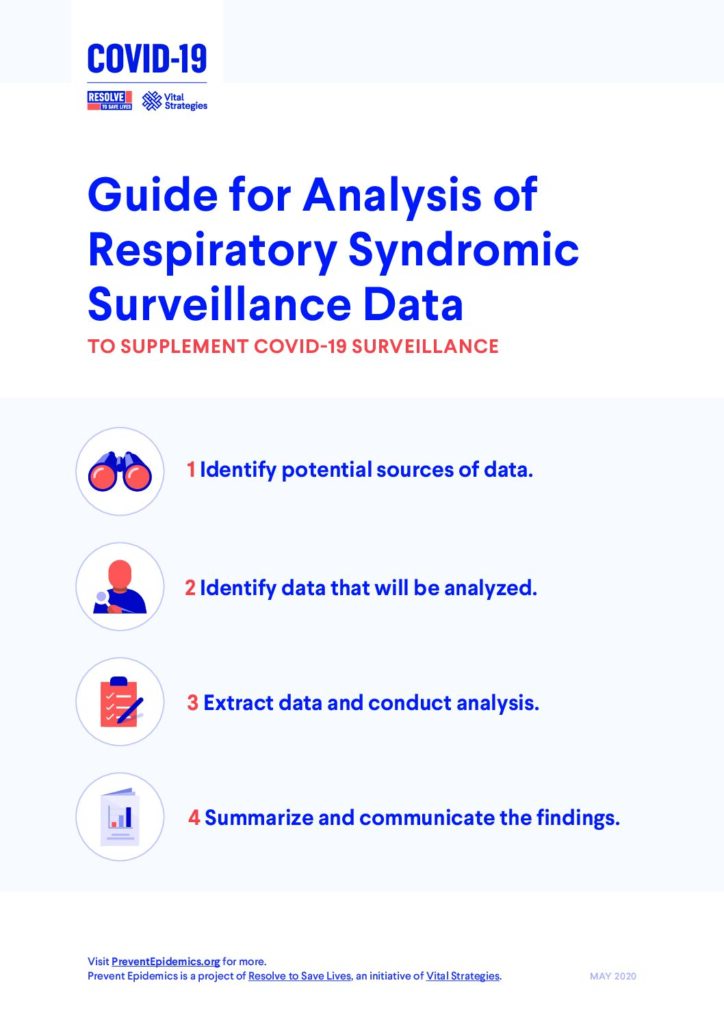
Practical guidance on using existing data from respiratory disease surveillance systems and hospital-based routine data systems to supplement COVID-19 surveillance and inform response activities.
Annex 1: How to create a COVID-19 alert-level system and supporting communication tools in resource-constrained settings
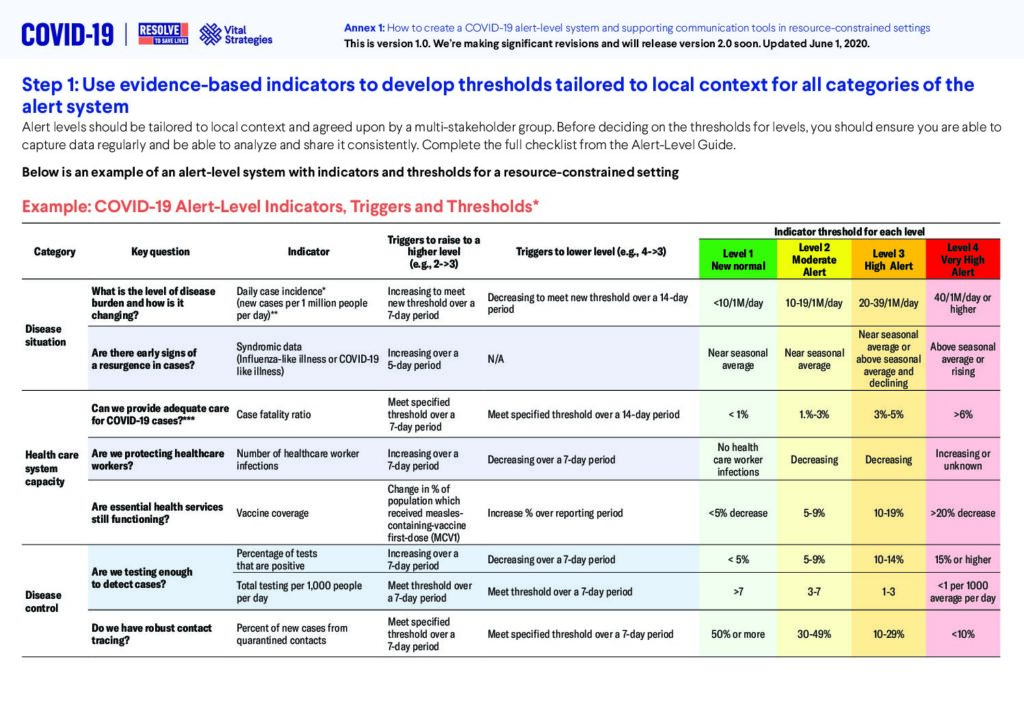
Step-by-step guidance on creating an alert-level system.
Prévention et contrôle des infections contre la maladie à virus Ebola et la COVID-19
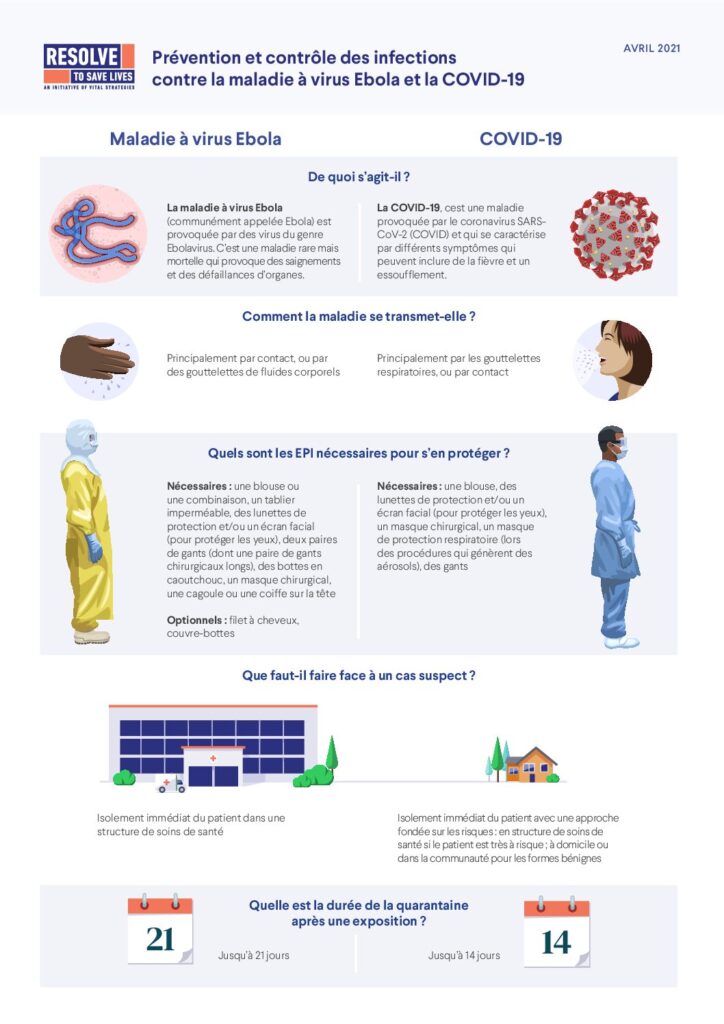
Fiche d’information sur la prévention et le contrôle des infections contre la maladie à virus Ebola et la COVID-19.
Infection Prevention and Control for Ebola (EVD) and COVID-19

This infographic outlines key infection prevention and control measures for Ebola Virus Disease (EVD) and COVID-19, focusing on practices like hand hygiene, the proper use of personal protective equipment (PPE), safe patient handling, and waste management.
A ToolKit for Strategic Policy Advocacy Campaigns Strategic Planning: Talking with Policy-Makers
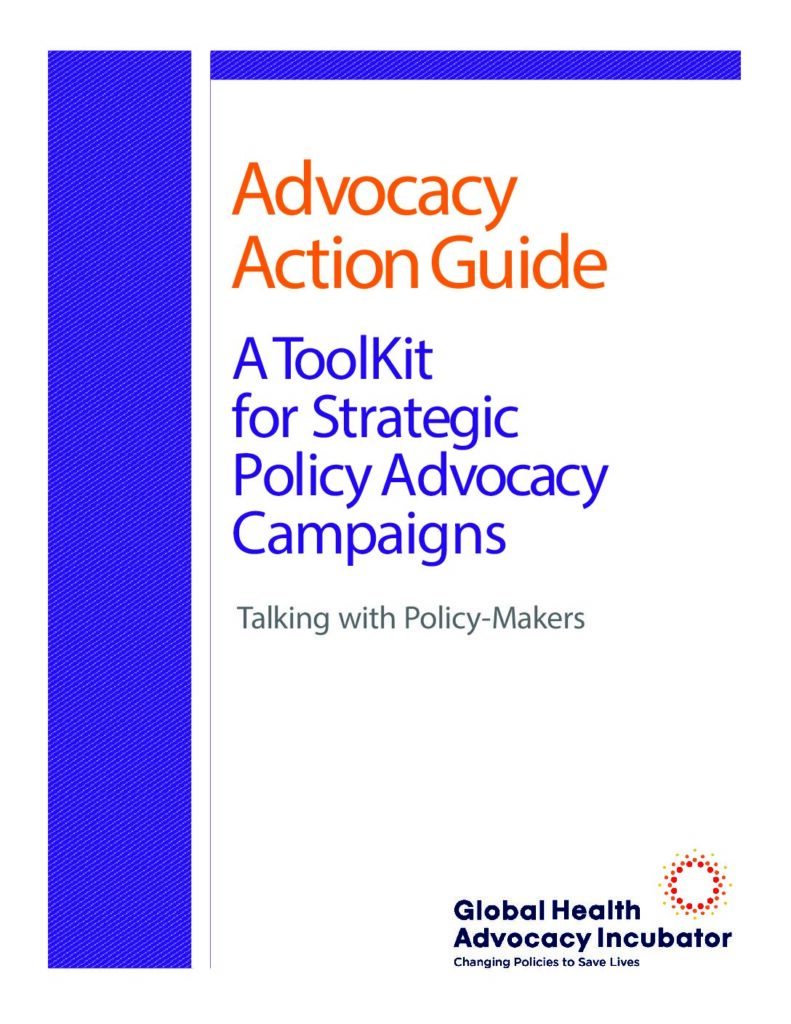
A guide designed to help civil society organizations plan a strategic policy advocacy campaign with specific details on how to talk with policy-makers.
A ToolKit for Strategic Policy Advocacy Campaigns Strategic Planning: How-to Guide
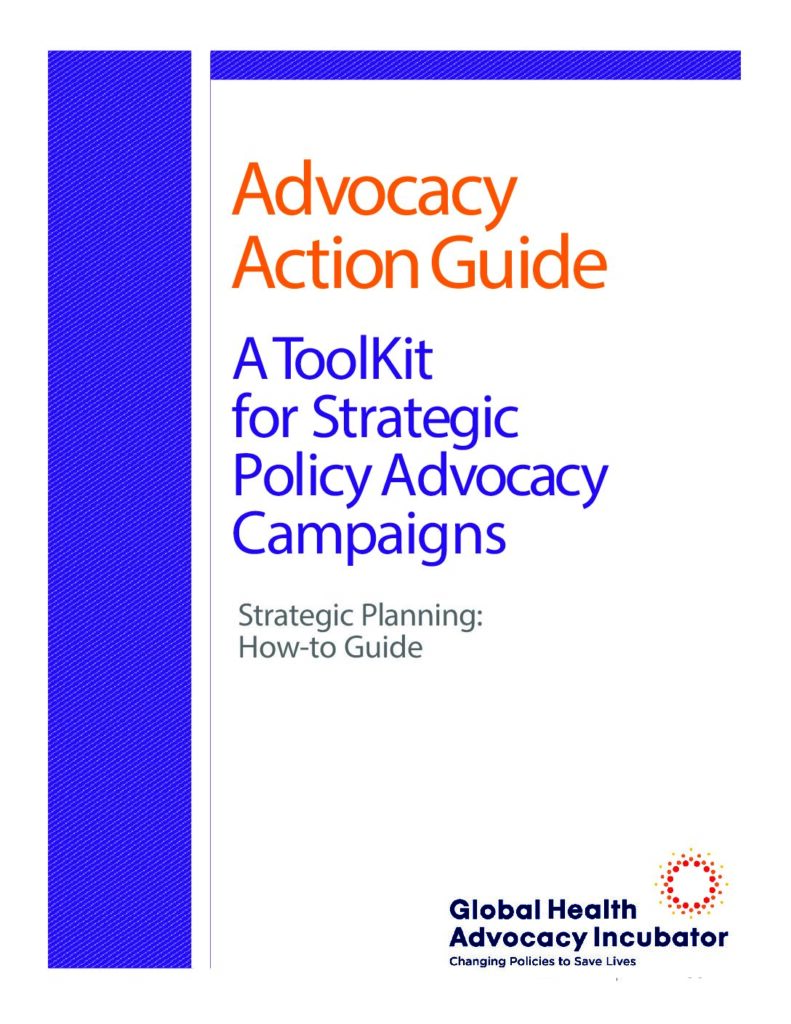
A how-to guide designed to help civil society organizations plan a strategic policy advocacy campaign.
A ToolKit for Strategic Policy Advocacy Campaigns Strong Partnership Coordination: A 5-Step Process

A toolkit designed to help civil society organizations plan a strategic policy advocacy campaign with specific details on how to coordinate strong partnerships.
Elements Of A Media Advocacy Campaign: What You Need to Know
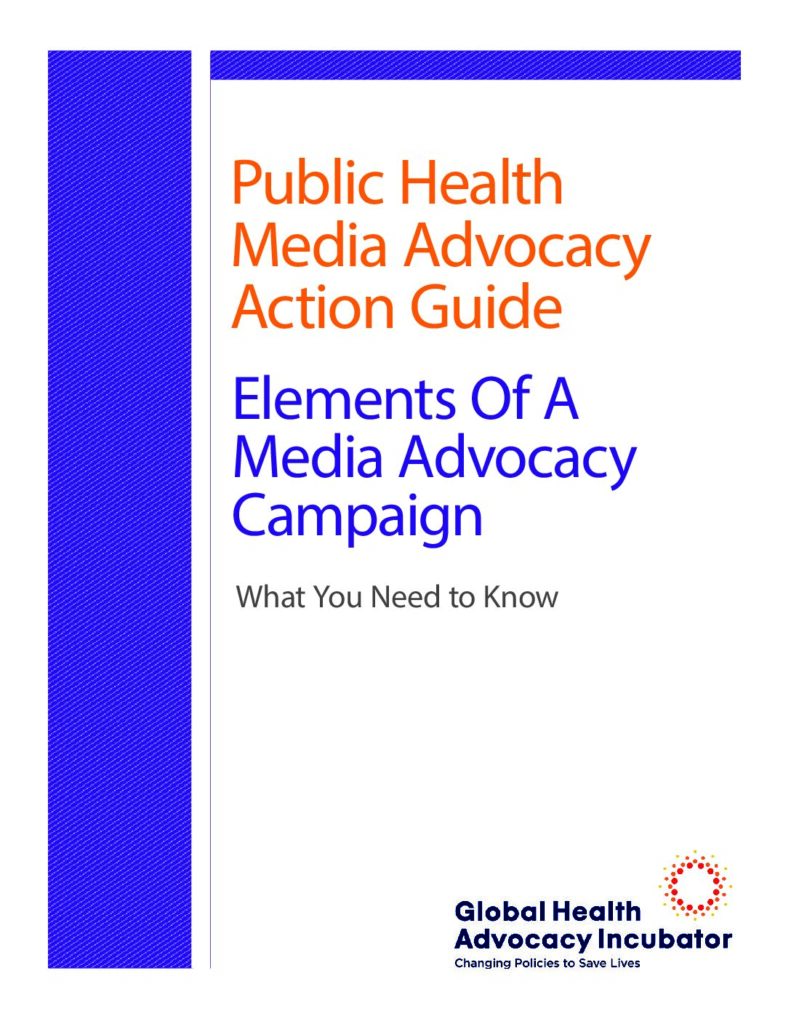
A guide designed to help civil society organizations plan public health media advocacy through a media advocacy campaign.
A ToolKit for Strategic Policy Advocacy Campaigns: Elements of a Policy Advocacy Campaign
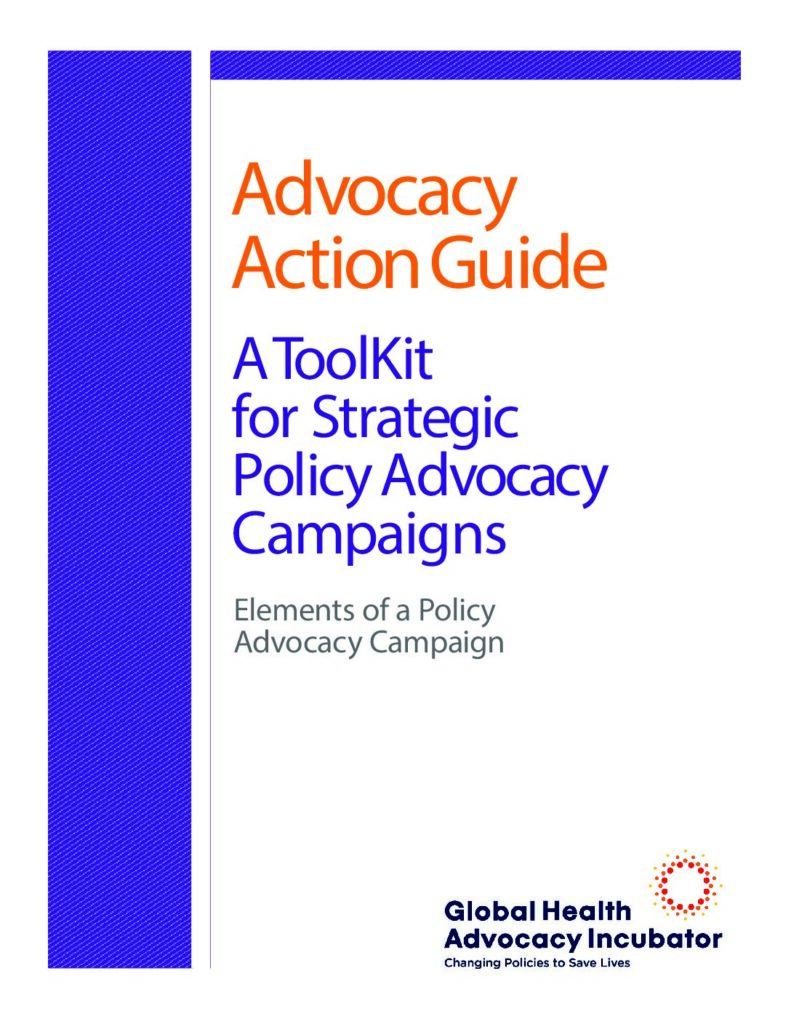
A toolkit designed to help civil society organizations plan a strategic policy advocacy campaign.
Considerations for the Development of a National Public Health Institute (NPHI)
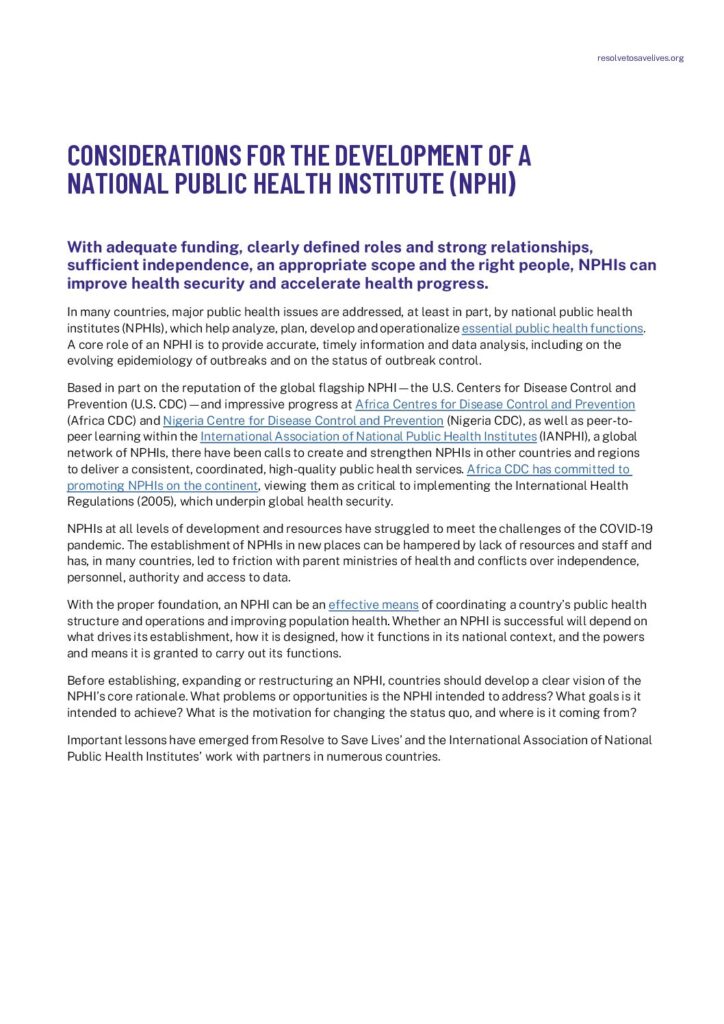
An overview of considerations for the development of a national institute of public health for countries to utilize in their planning.
“Voices” of Long COVID Stress the Urgency of COVID-19 Vaccination

An overview of Resolve to Save Lives’ 2020 awareness campaign to highlight COVID long-haulers’ experience and urge vaccine uptake.
Strengthening Epidemic Preparedness at the Country Level
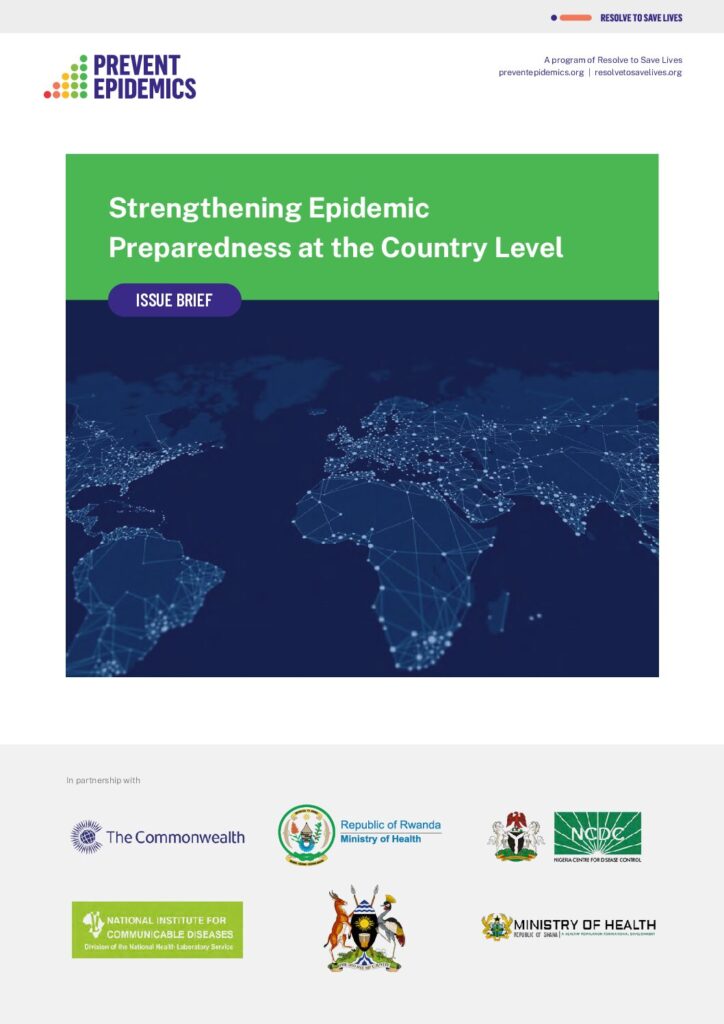
Issue brief presenting five recommendations for strengthening health security at the country level—developed and refined hand-in-hand with governments and partners
Renforcer la préparation aux épidémies au niveau national

Dossier d’information sur le renforcement de la préparation aux épidémies au niveau national.
International Health Regulations FAQ’s
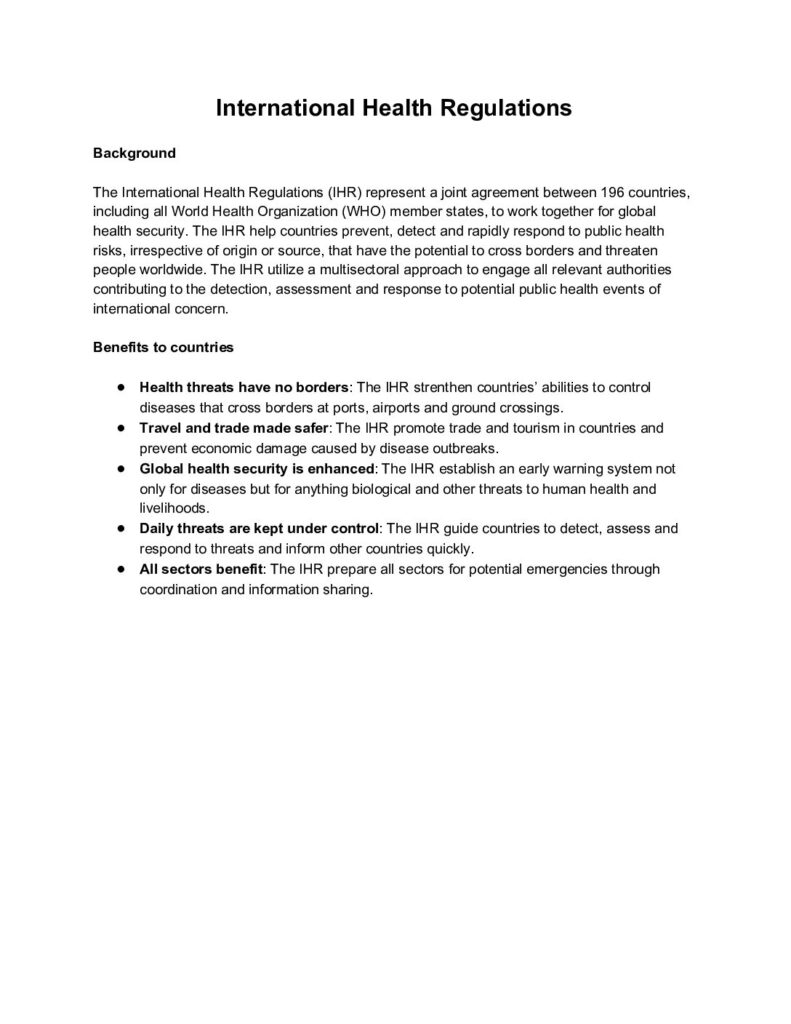
A fact sheet providing an overview of the IHR with FAQ’s.
PMEP 2023-2024: Questions Fréquemment Posées

Questions fréquement posées sur le programme PMEP (Gestion des programmes pour la préparation aux épidémies).
PMEP 2023-2024: Frequently Asked Questions
A FAQ document on program management for epidemic preparedness.
PMEP Overview

An overview of program management and epidemic preparedness, a leadership and management program that enables teams to accelerate epidemic preparedness in their countries through thoughtful peer exchange and practical learning.
Présentation de PMEP
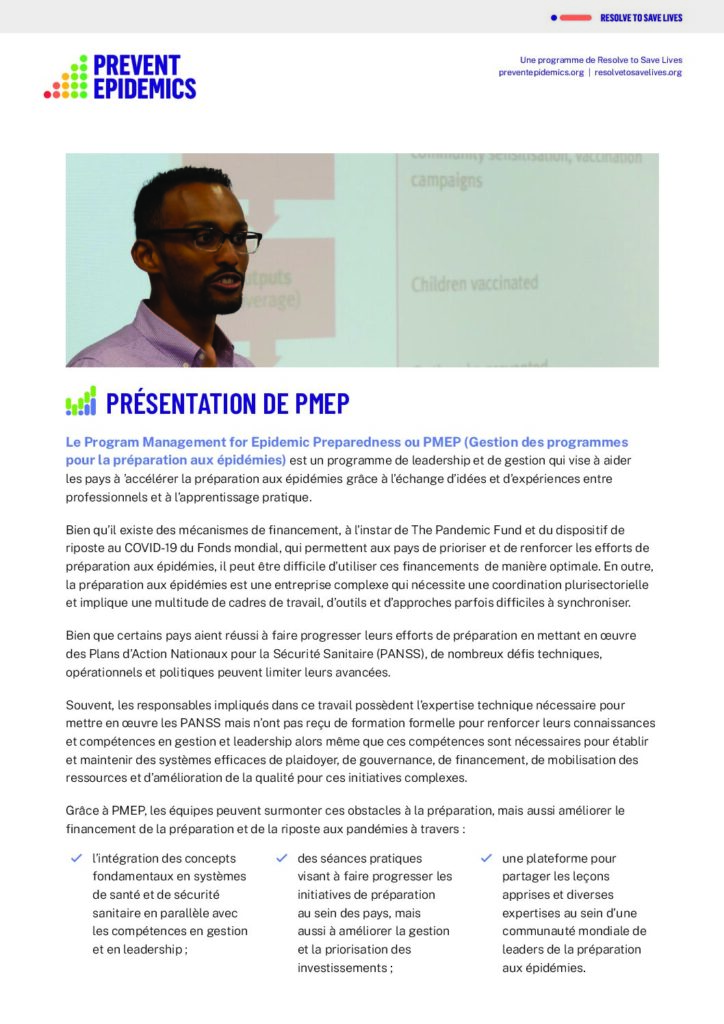
Dossier d’information sur le programme PMEP (Gestion des programmes pour la préparation aux épidémies).
7-1-7 Pilot Project
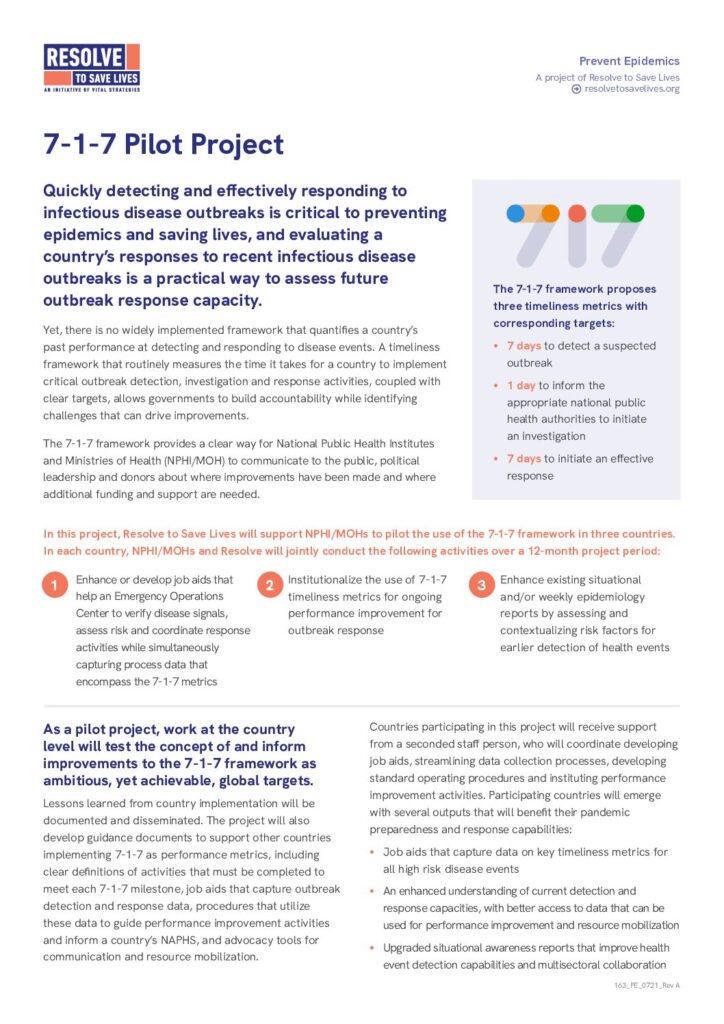
The 7-1-7 framework helps countries strengthen their outbreak detection and response by setting clear targets: 7 days to detect a suspected outbreak, 1 day to inform public health authorities, and 7 days to initiate a response. This pilot project tested the framework in three countries to improve pandemic preparedness and guide performance improvements.
Messages clés de prévention et contrôle des infections (PCI) pour la maladie à virus Ebola dans les structures de soins de santé
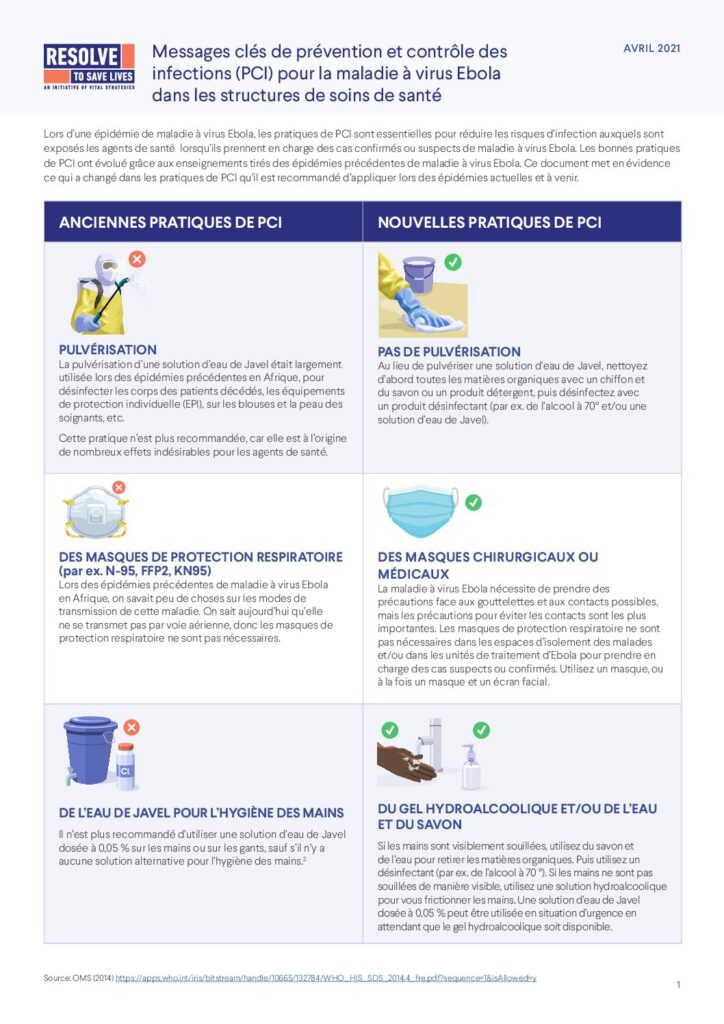
Fiche d’information sur les messages clés de ce qui a changé dans le pratiques de PCI qu’il est recommandé d’appliquer lors des épidémies actuelles et à venir.
Key Infection Prevention and Control (IPC) Messages for Ebola Virus Disease (EVD) at Health Care Facilities
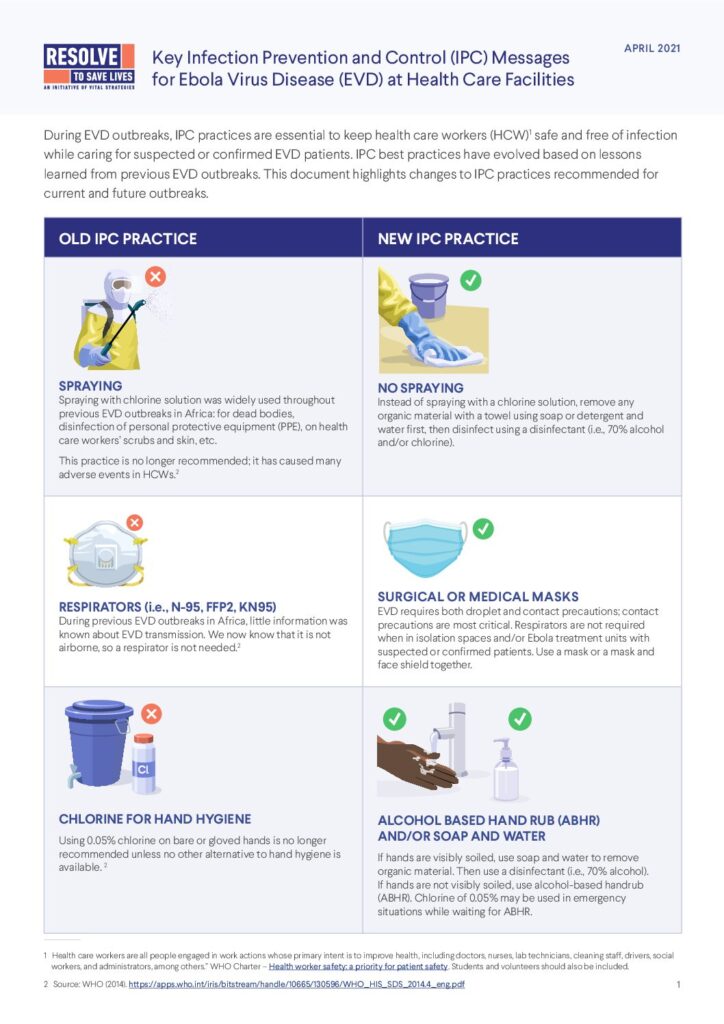
An overview of changes to infection, prevention and control (IPC) practices recommended for Ebola Virus Disease (EVD) outbreaks.
International Health Regulations (IHR) Overview
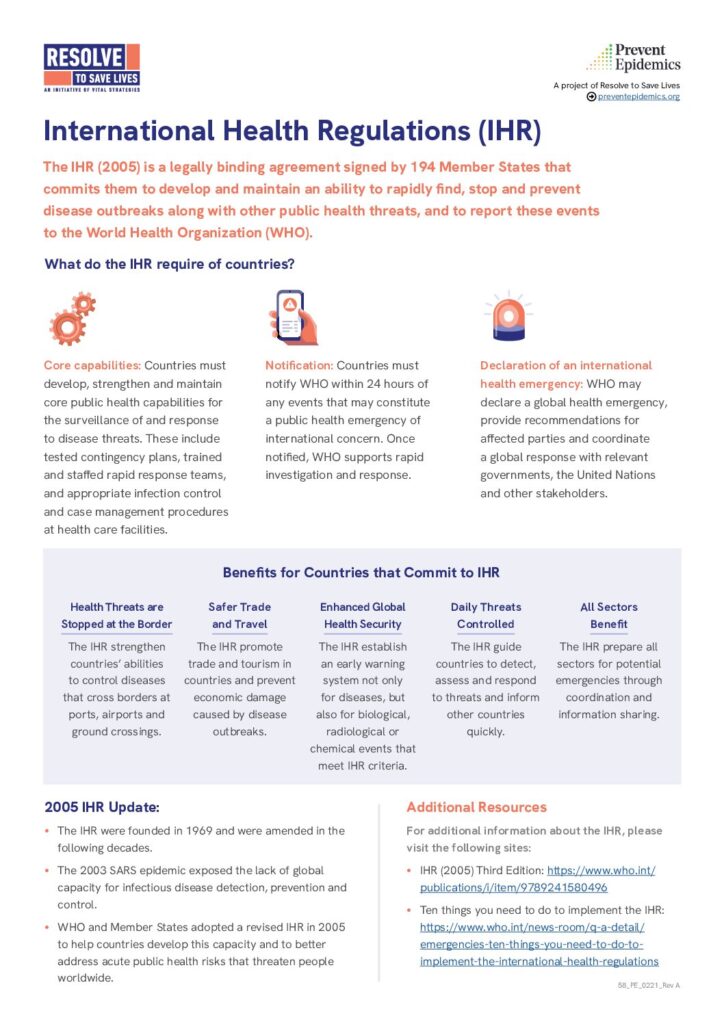
An overview of the International Health Regulations.
Joint External Evaluation
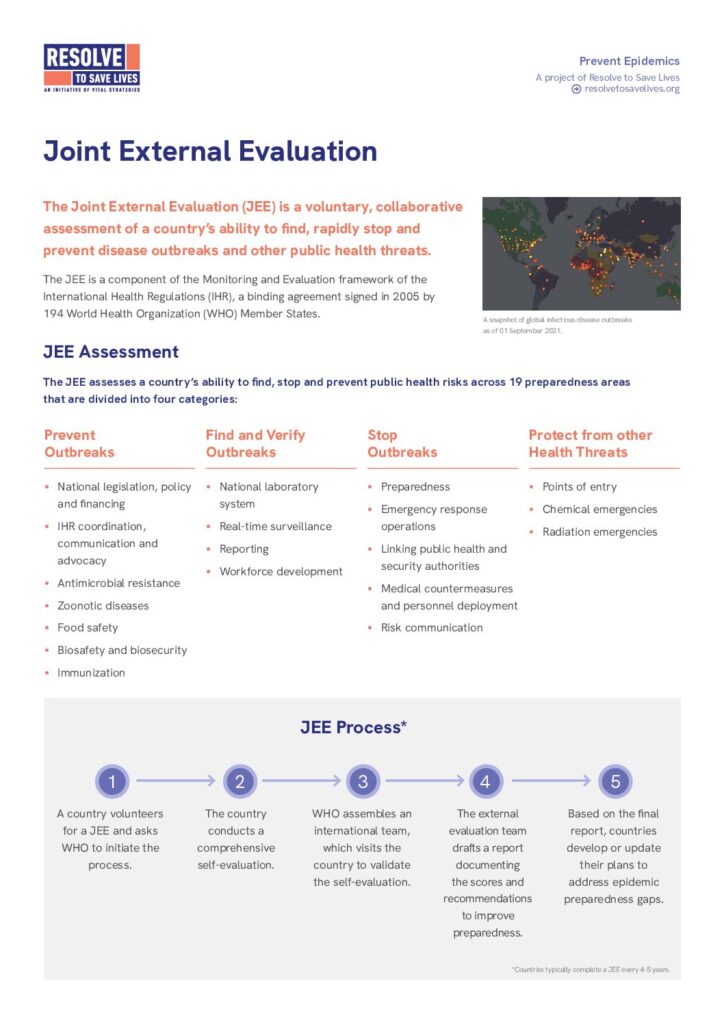
An overview of the Joint External Evaluation (JEE), a voluntary, collaborative assessment of a country’s ability to find, rapidly stop and prevent disease outbreaks and other public health threats.
Measures to Improve COVID-19 Response

A step- by-step framework to use in analyzing and improving their systems of epidemic control. This outlines targets for key completeness measures and time intervals between activities, based on mathematical models of case investigation and contact tracing, to effectively reduce COVID-19 transmission.
Building resilient populations in the face of COVID-19
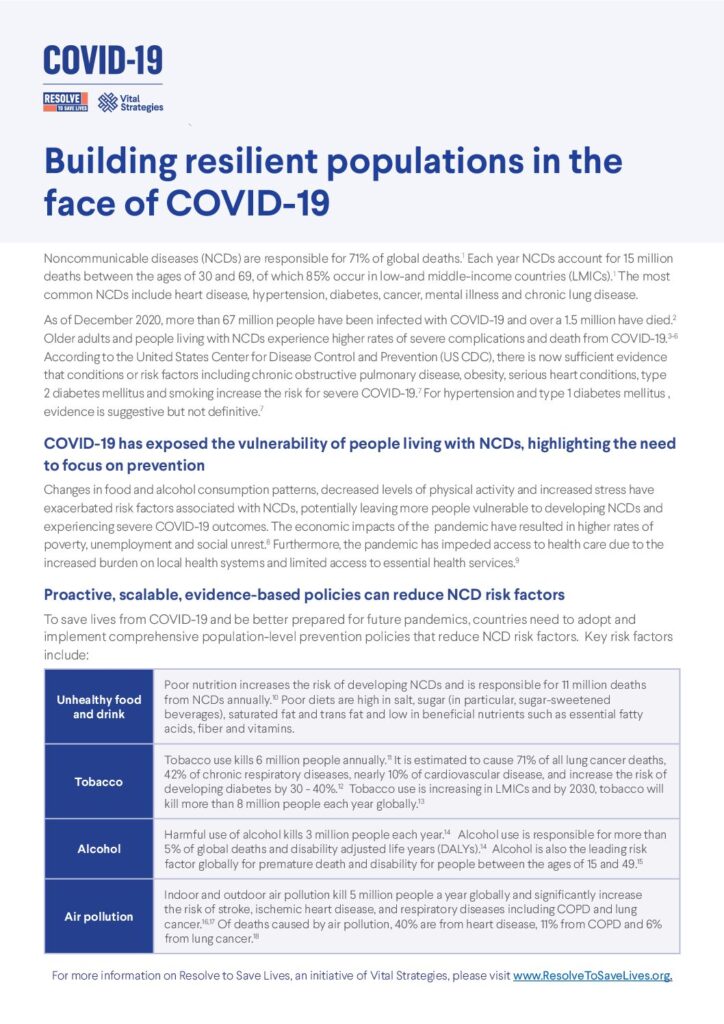
This document highlights the need to reduce noncommunicable disease (NCD) risk factors—such as poor nutrition, tobacco, alcohol use, and air pollution—in order to protect populations from severe COVID-19 outcomes and future pandemics. It recommends evidence-based policies, like trans fat elimination and tobacco control, to build resilience and promote healthier, longer lives.
Urban pandemic response: Survey results describing the experiences from twenty-five cities during the COVID-19 pandemic

How do local governments contribute to pandemic response? For PLOS Global Public Health, Resolve to Save Lives collaborated with colleagues at Center for Global Health Science & Security and Vital Strategies to assess government responsibilities, the timeline of response activities, challenges faced during the COVID-19 pandemic among members of the Partnership for Healthy Cities. Among […]
Understanding, preventing, and stopping epidemics
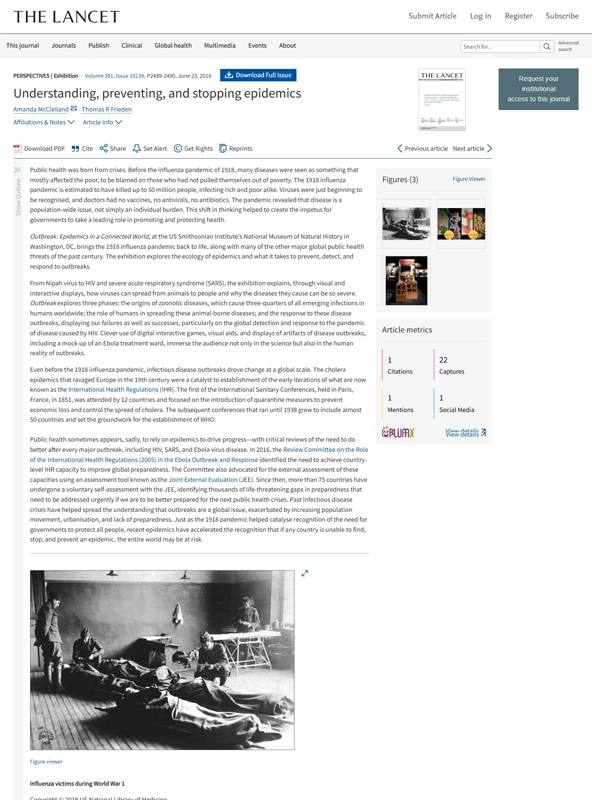
The Smithsonian exhibition, Outbreak: Epidemics in a Connected World, shows that the world cannot afford to wait for the next epidemic—we must act on the information that we have now to end preventable outbreaks. Writing for the Lancet, Resolve to Save Lives reflects on the impact of epidemics over the past century, from Nipah virus […]
Timeliness metrics for screening and preventing TB in household contacts of pulmonary TB patients in Kenya
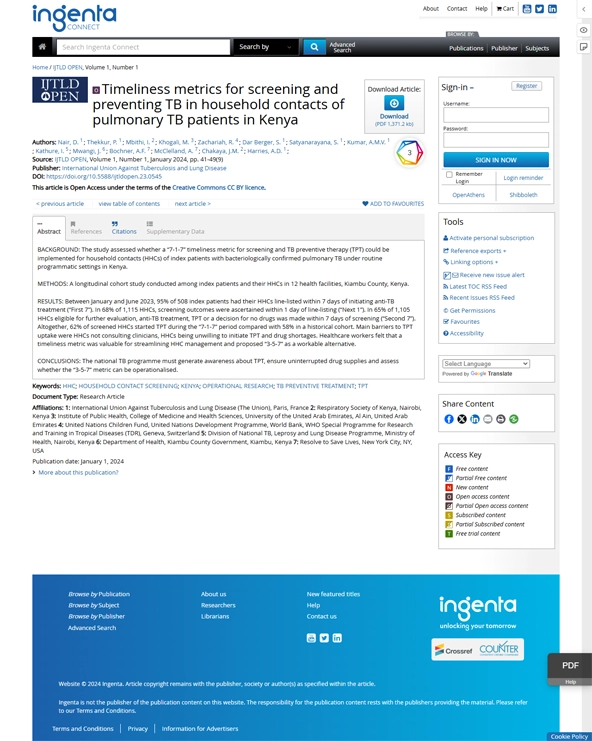
In a study published in the International Journal of Tuberculosis and Lung Disease, our colleagues at the International Union Against Tuberculosis and Lung Disease and the Respiratory Society of Kenya evaluated the feasibility of implementing a “7-1-7” timeliness metric for screening and initiating TB preventive therapy (TPT) among household contacts (HHCs) of index patients with […]
The world must prepare now for the next pandemic
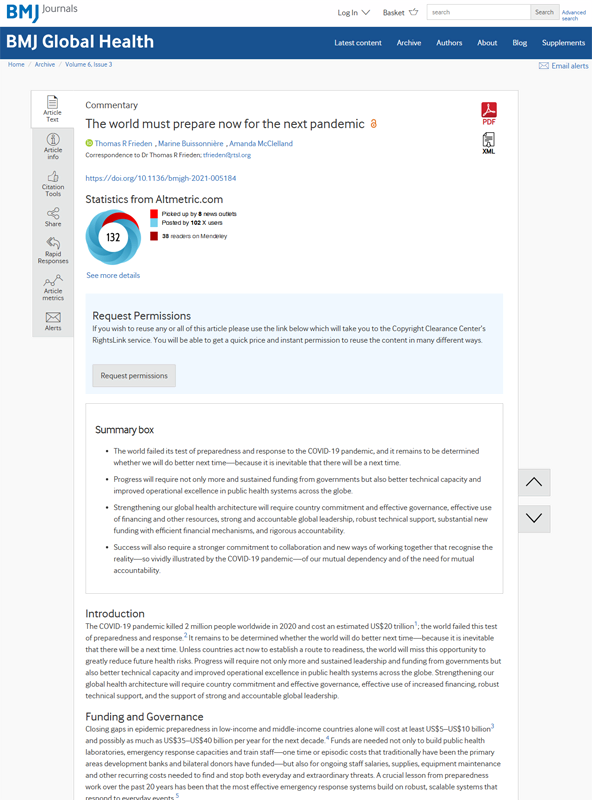
In a commentary for BMJ Global Health, Resolve to Save Lives takes lessons from the COVID-19 pandemic and proposes an updated understanding of pandemic preparedness. Moving forward, we must secure increased and sustained funding from governments, while enhancing technical capacities and operational excellence in public health systems worldwide. Strengthening our global health architecture demands a […]
The road to achieving epidemic-ready primary health care
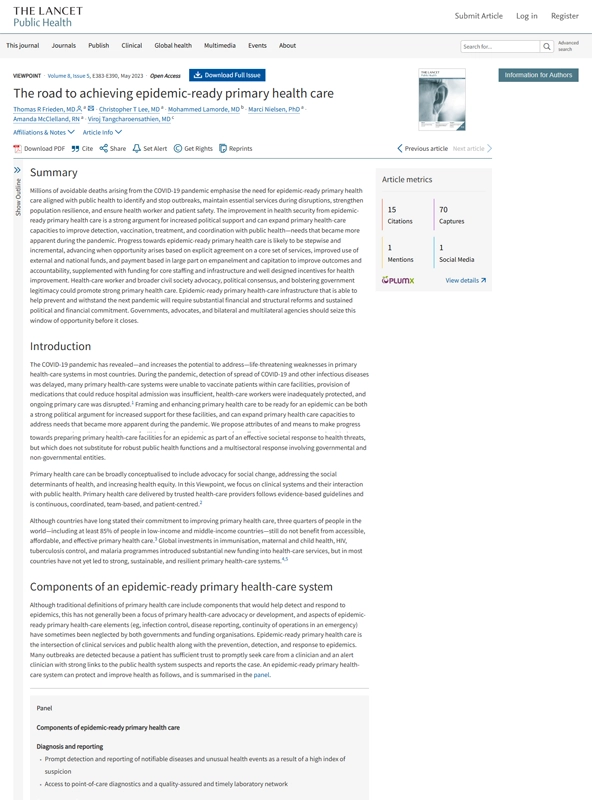
A new model for integrating public health and health care delivery— epidemic-ready primary health care—that can identify and stop outbreaks, maintain essential services during disruptions, strengthen population resilience, and ensure health worker and patient safety. For the Lancet Global Health, we argue that strengthening primary health-care capacities for detection, vaccination, treatment, and coordination with public […]